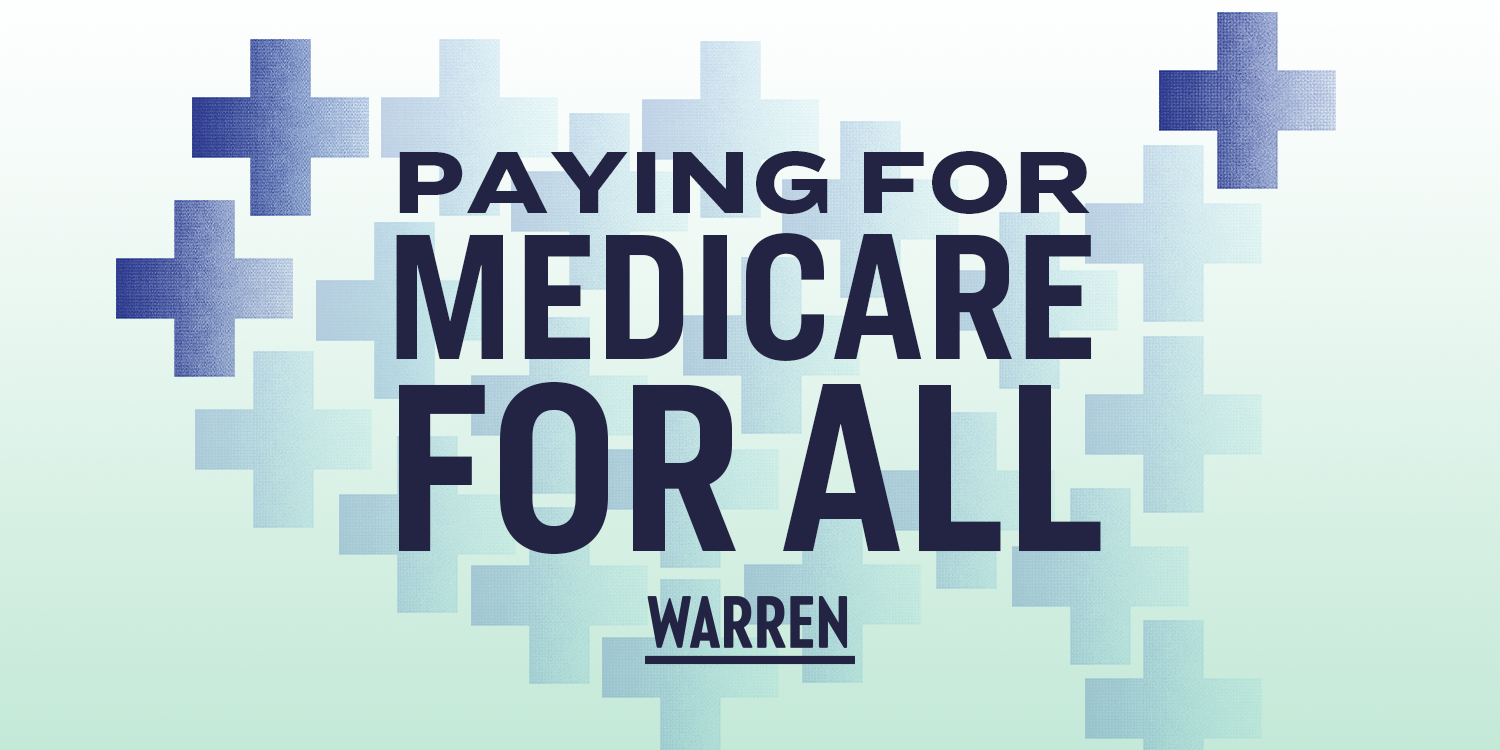Joan McCarter, Daily Kos Staff
 |
| https://medium.com |
She created a
big task for herself: "Under my plan, Medicare for All will cover the full
list of benefits outlined in the Medicare for All Act, including long-term
care, audio, vision, and dental benefits. My plan will cover every single
person in the U.S., and includes common-sense payment reforms that make
Medicare for All possible without spending any more money overall than we spend
now."
On paper, she
succeeds. That's an important factor to note—there are a lot of unknowns in
future spending, but working with the current system and with an expansive
knowledge of what's working and what's broken within it, she's created a plan
with financing that is grounded in today's reality.
Noting that overall spending on health care is estimated to be $52 trillion over the next 10 years, Warren has structured a plan that would stay under that target by:
- Using existing Medicare and Medicaid spending at the federal and state levels;
- Shifting other spending to provide universal coverage through a combination of:
- Redirected employer spending on health insurance;
- Shifting from insurance companies to a federal insurance;
- New taxes on financial firms, giant corporations, and the top 1%;
- Increased enforcement of tax laws to capture taxes the rich and corporations regularly evade now and
- Shifting wasteful defense spending.
That will make
up the $11 trillion that individuals spend out of pocket "in the form of
premiums, deductibles, copays, and out-of-pocket costs."
With it comes
more certainty than either employers or employees have now. Employers will
be less subject to the whims of insurers and will have a set formula for
determining what they pay.
Her plan is
structured to keep their spending on what's essentially a new from of payroll
tax under what they currently spend.
The savings will
be directed to increased compensation to employees; they'll get back in direct
wages what have been indirect compensation in the form of insurance premiums
paid by employers.
Without changing
the current tax structure for middle class workers, the increase in taxes on
their wages will constitute their contribution.
Some unions have
been hostile to a Medicare for All scheme because of the good health insurance
they've bargained for.
She addresses that as well by allowing employers who have collective bargaining agreements to reduce their "Employer Medicare Contribution if they pass along those savings to workers in the form of increased wages, pensions, or other collectively-bargained benefits."
She addresses that as well by allowing employers who have collective bargaining agreements to reduce their "Employer Medicare Contribution if they pass along those savings to workers in the form of increased wages, pensions, or other collectively-bargained benefits."
She also
encourages companies which don't have these agreements to create them by giving
them the same deal, creating "a significant new incentive for unionization
generally by making collective bargaining appealing for both workers and
employers as a way of potentially reducing the employer's Employer Medicare
Contributions."
She also
acknowledges the role that immigration reform can play, noting that a CBO
analysis of the 2013 comprehensive immigration reform would generate $400
billion in direct federal revenue.
Her plan was developed with expert assistance on two fronts—how to make a universal healthcare system and secondly, how to pay for it.
On the delivery
side, she consulted with Don Berwick, the former director of the Centers for
Medicare and Medicaid Services; and Simon Johnson, the former chief economist
at the World Bank.
She worked with
Betsey Stevenson, who served as chief economist at the Labor Department under
President Obama and Mark Zandi, the head economist at Moody’s Analytics, along
with Johnson to develop the tax portion of the plan.
There's much
more in this plan to unpack, including how she'll deal with providers and
pharmaceutical companies and every other stakeholder, but it's key to note that
it's classic Elizabeth Warren.
It has grown out
of the value system and her "two absolute non-negotiables when it comes to
health care:
And it reflects the policy seriousness and understanding that is Warren's trademark.
- "No American should ever, ever die or go bankrupt because of health care costs" and
- "Every American should be able to see the doctors they need and get their recommended treatments, without having to figure out who is in-network."
And it reflects the policy seriousness and understanding that is Warren's trademark.
She's answered
the tax "gotcha" question that every debate moderator and her primary
opponents have thrown at her emphatically and comprehensively. Which is good
news for future debates.
Maybe less time
will be spent on that question and on the multitude of other issues facing the
nation that need be addressed.